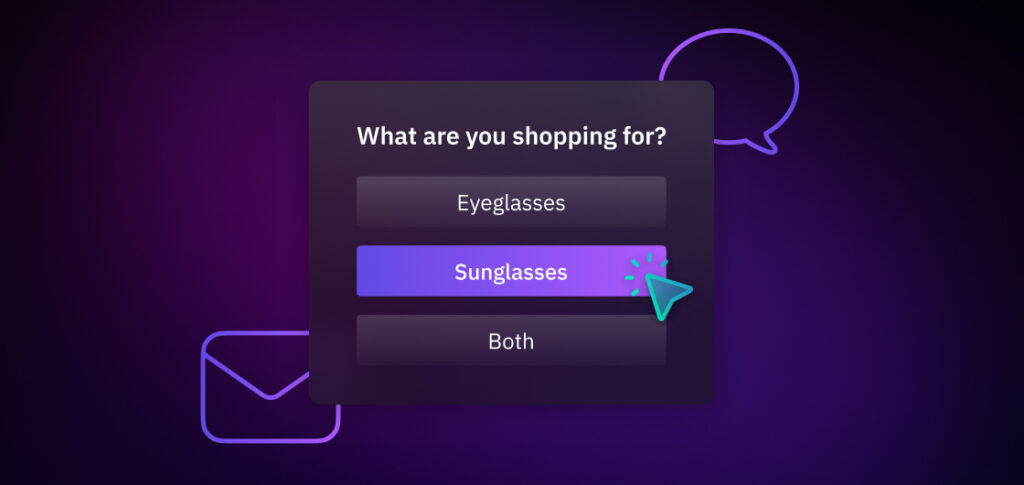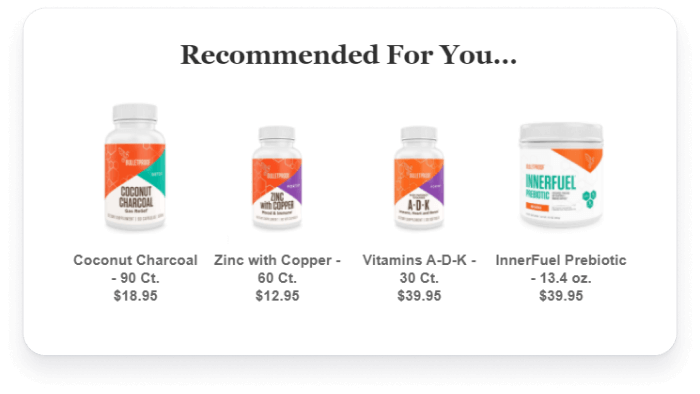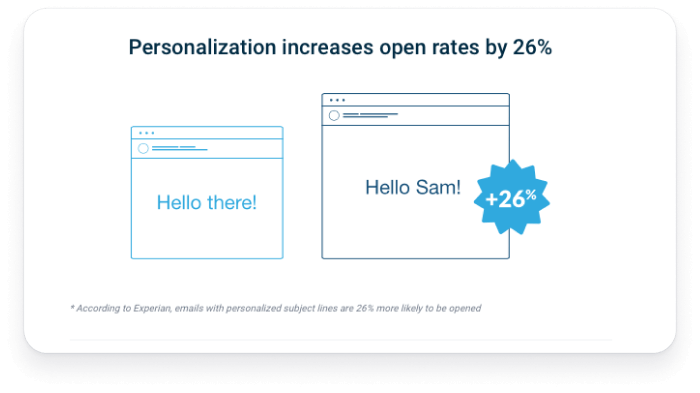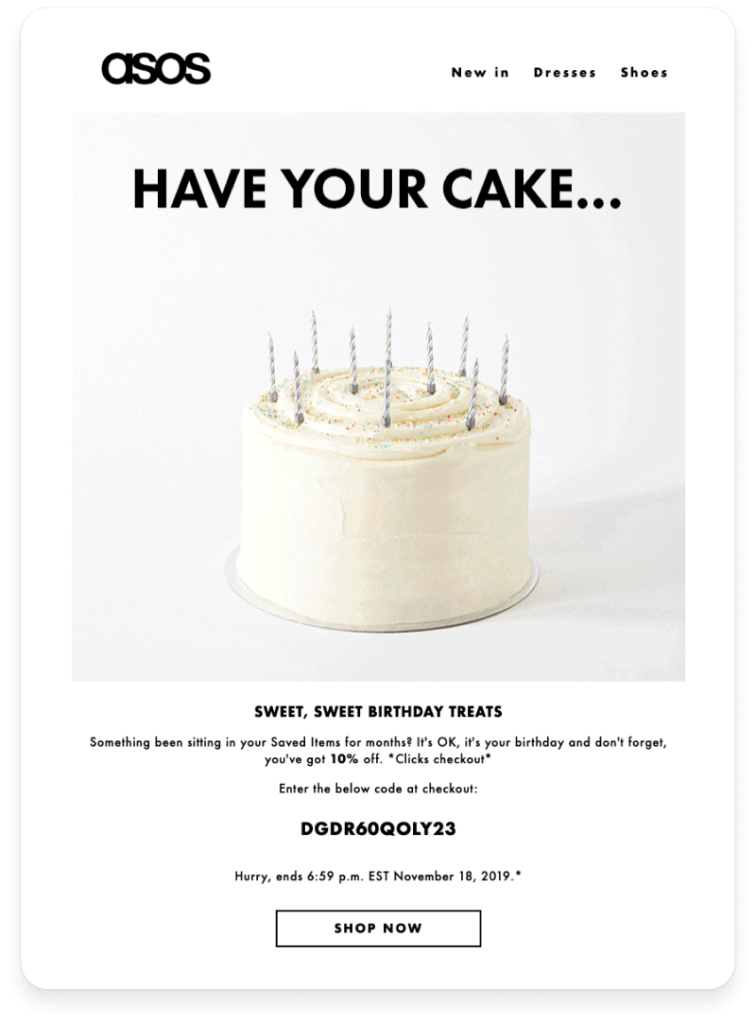
- Customer Experience
- Personalization
- Quizzes
How to Create an Effective Quiz Marketing Funnel
Matt Goodman | Dec 23, 2024
Oct 25, 2021 | 9 minute read

Matt Goodman
Co-founder, CEO
For ecommerce success, personalization is key.
Gone are the days of a one-size-fits-all approach when it comes to customer experience. Customers expect, in fact, demand a shopping experience that suits their needs and makes them feel like a valued customer – and it’s your job to give them exactly that.
So, how can you incorporate personalization within your ecommerce marketing strategies?
In this article we discuss exactly what ecommerce personalization is, its benefits and how you can make personalization work for your store with examples.
Ecommerce personalization is a marketing tactic used by merchants to tailor a customer’s shopping experience based on the user’s needs or interaction history. This includes product recommendations, targeted promotions, and customized email marketing campaigns.
The level of personalization you provide a customer with will depend on the information you have collected about the individual. This includes customer location, browsing history, purchase history and level of brand engagement.
Put simply, ecommerce personalization is the practice of delivering the right message to the right customer at the right time.
For your ecommerce personalization strategy to be successful it must add value to the customer.
So, how do you determine what’s valuable?

Ecommerce personalization comes with many benefits, including…
Now that we’ve discussed the basics of personalization and its benefits, let’s explore how you can use ecommerce personalization to grow your business.
First things first, if you have additional international stores, it’s best-practice to implement geo-location alerts when a customer lands on your site. This way, if a customer lands on the wrong store (currency/language) they’re redirected to the right one based on their browser preferences and location.
Personalizing your homepage is a no brainer, but you’d be surprised how many merchants forget about it. You should think of your homepage as your shop window. It’s a customer’s first impression of your store and your brand, which makes it the perfect place to advertise your products, promotions and offers.
From the moment a customer lands on your homepage, they should see a whole range of personalized content, including preferred product categories, suggested product recommendations, recently viewed products, and more. It’s here, you can leverage what you already know about a customer and use this to tailor their onsite experience in a way that’s easy to navigate.
Personalized product recommendations are one of the most popular and powerful examples of ecommerce personalization. For each product you sell, there are other products that customers have bought and viewed. These related items are great for up-selling and cross-selling.
What’s more, adding ‘recently viewed’ products to your customers’ shopping journey is often the extra push they need to make that all-important purchase. This is because most customers will browse through different stores before buying. So when they’re ready to buy from your store they can easily come back and find the product they were looking for.
Also, we recommend promoting bestsellers and trending items on your homepage. This creates a real sense of urgency and increases your conversion rate.
Product recommendation carousels are versatile and can be added to almost anywhere on your site. At Velstar, we find the most common areas include:

Many high-growth ecommerce businesses adopt the ‘Continue shopping’ tactic. Why? Because it allows customers to pick up where they left off in just the click of a button.
This approach remembers your customers’ selected items and preferences through previous sessions, making it easier for them to buy.
When a customer is searching for a product, you can tailor the search results page on your store by displaying personalized recommendations based on browsing history.
Similarly, you can utilize what you know about returning customers and show the most relevant information when they search. Offering category suggestions allows your customers to keep their search broad, whilst focusing on their interests.
When customers are browsing, it’s inevitable they’ll come across products they like but aren’t ready to buy yet. This is where ‘Wish Lists’ come in handy. They allow users to save items for a later date.
We suggest incorporating ‘Wish Lists’ into your email marketing campaigns. For example, if a product on a customer’s ‘Wish List’ is low in stock or discounted, inform them via email. Again, this creates a sense of urgency and increases the chances of a sale.
Just because your customers are choosing to shop online doesn’t mean human interaction is no longer important to them. In fact, customers crave a deeper connection with brands, particularly since the global pandemic.
Rather than leaving your customers to search for the answers themselves, offer an instant live chat feature which will save them time and make them feel valued. Live chats are conversational and offer the customer a human touch, which boosts loyalty and improves the overall customer experience.
Over the years, chatbots have become more and more popular, enabling merchants to interact with customers 24/7. This is particularly useful if you’re a big brand selling internationally in various time zones.
However, some businesses are reluctant to use chatbots based on the perception that they lack a personal touch, but this isn’t a problem when you use AI-driven chatbots. AI recreates the experience of talking to an actual person and can even offer personalized product recommendations.
With so many emails cluttering your customers’ inboxes these days, you need to make sure your emails stand out from the crowd. The best way to reduce inbox inevitability is through relevant, highly personalized email campaigns. Including your customer’s name in the email and subject line will make a personalized connection from the get-go.
Also, segment your customers based on shopping behavior including most visited pages, “Wish Lists”, etc. And don’t forget to include product recommendations and high-quality imagery in your emails as well.

Talking of personal emails, you should message your customers on important days, such as birthdays and anniversaries, offering them a great discount to celebrate. These kinds of personalized messages make the customer feel special and prompt purchase, as well as build brand loyalty and engagement.

An excellent way to win back lost sales is through automated abandoned cart emails. Maybe a customer got distracted during their shopping journey, an abandoned cart email could be the helpful prompt they need to make the purchase. Personalize the email with items from the customer’s cart and add product recommendations.
Once a customer has visited your store, you’ll have a better understanding of what products they’re interested in. You can then leverage this behavioural insight to create retargeting campaigns and a personalized shopping experience.
There are lots of options in terms of content that you can use for retargeting. For example, you can show customers their recently viewed items or suggested items based on their browsing history, and you can remind customers of products they abandoned in their cart.
If you’re planning to use social media channels such as Facebook, be sure to automate your retargeting campaigns so ads achieve maximum results.
Adding user generated content (UGC) to your product pages is another personable way to encourage a customer to add products to their cart. This is because it gives your products authenticity, builds trust, and ultimately customers look for this to inform their purchasing decisions.
So, make sure customer reviews and UGC are clearly visible on every product page to give shoppers the confidence to complete their order. At Velstar we recommend implementing a reviews program that comes with all the tools you need to capture and showcase highly impactful social proof that’s customisable, not to mention one that integrates seamlessly with other third-party Shopify apps including Gorgias, LoyaltyLion and Klaviyo.
And why not go one step further and ramp up FOMO and urgency with popularity messaging on your product pages by showing how many other customers are looking at or have that particular product in their cart right now?
Finally, a customer’s experience with your brand doesn’t end at check-out, so why should personalization? This is where a post-checkout page comes in. It’s the perfect opportunity to engage your customer further on a deeper, more personal level.
There are a few ways merchants can do this, including a referral incentive, a CTA to sign up to a newsletter or a discount code for the customer’s next purchase.
Ecommerce personalization is not a fad, it’s here to stay. If you’re not implementing it into your customer experience, then you’re missing out on a serious money maker.
Offering your customers a personalized experience doesn’t mean you have to redesign your entire website. But it’s something that should be taken seriously if you want to scale.
As always, it’s important to take an omnichannel approach. personalization isn’t just about onsite experience. You need to consider other channels in your strategy including email, SMS, customer service and social media.


Dan Sheard is the Managing Director of the leading Shopify Plus partner agency, Velstar. Having supported hundreds of direct-to-consumer brands over the years, Dan has seen all the challenges that brands face and has a proven track record of helping entrepreneurs achieve success. Velstar takes a data-driven approach to personalization. They leverage the very best technology to create highly personalized, targeted content that customers love. If you’d like them to do the same for your business, get in touch today!
Related articles
Ready to learn more?